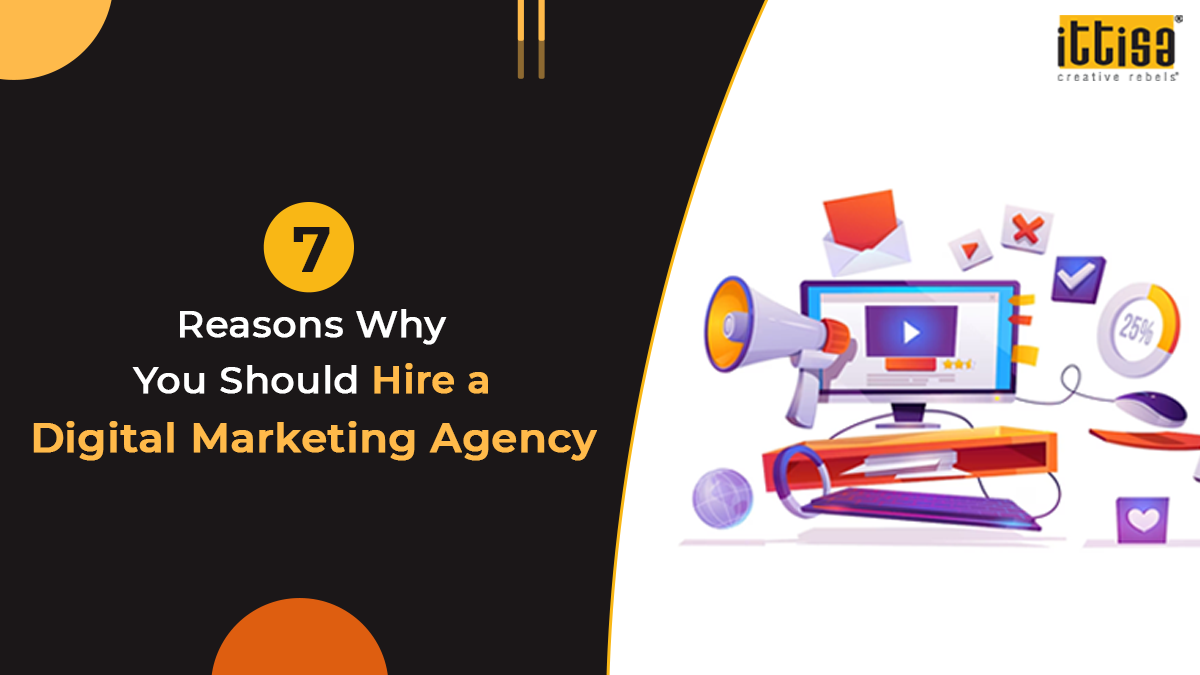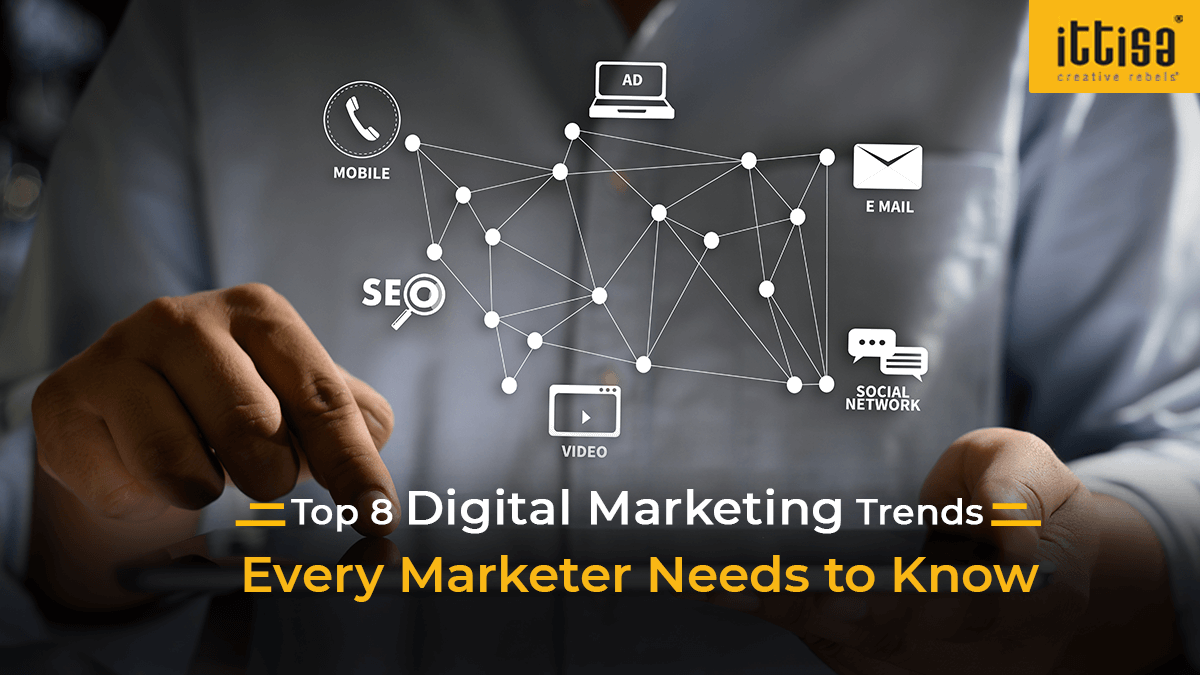September 26, 2019
Things You Need to Know About Programmatic Ad Buying
“Do you know that 62% of marketers use programmatic advertising to achieve brand objectives?”
The process of ad buying has witnessed a massive development with the advent of programmatic advertising. Using technology and huge volumes of data available online, brands have been successful in targeting an interested audience with ads that are relevant for them.
Having the ability to automate as well as scale complex systems, programmatic technology has already gained dominance in digital marketing. The major players involved in programmatic ads are -
● Brands
● Media agencies
● Demand Side Platforms
● Ad Exchanges
● Supply Side Platforms
● Publishers
● Audience
[caption id="attachment_12716" align="aligncenter" width="500"] Source: mindstreammedia.com[/caption]
“Programmatic ad buying allows brands to focus on who they’re serving ads to, rather than where they’re serving the ad.” Apart from being highly targeted, programmatic buying can also help open new doors of opportunities while saving both time and money.
Programmatic media buying are classified into 3 types -
Source: mindstreammedia.com[/caption]
“Programmatic ad buying allows brands to focus on who they’re serving ads to, rather than where they’re serving the ad.” Apart from being highly targeted, programmatic buying can also help open new doors of opportunities while saving both time and money.
Programmatic media buying are classified into 3 types -
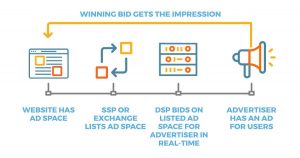 Source: AquityAds[/caption]
Advantages of RTB:
a. Per-impression ad buying process - With real-time bidding, brands have the advantage of bidding only on single impressions instead of paying a predetermined non-negotiable price. This reduces the probability of waste and also prevents advertisers from overpaying.
b. Single dashboard usage - Both advertisers and publishers use a single dashboard on the DSP (Demand Side Platform) or SSP (Supply Side Platform) for controlling the ad campaigns, eliminating the chances of confusion and the need of having multiple partners.
c. Easy to test & adjust - Data that is collected at the impression-level makes it easier for advertisers to analyze the efficiency of the ad creatives, context and the effect on the consumers - thus leading to an adaptable strategy.
d. Insights - Publishers get information in real-time about the inventories that perform the best and the ones most preferred by advertisers.
e. Remnant ad spaces are also sold - Auctions in RTB are automatically triggered with the arrival of a target visitor. Hence, inventories that were unsold previously can still be sold later, thus avoiding wastage.
Source: AquityAds[/caption]
Advantages of RTB:
a. Per-impression ad buying process - With real-time bidding, brands have the advantage of bidding only on single impressions instead of paying a predetermined non-negotiable price. This reduces the probability of waste and also prevents advertisers from overpaying.
b. Single dashboard usage - Both advertisers and publishers use a single dashboard on the DSP (Demand Side Platform) or SSP (Supply Side Platform) for controlling the ad campaigns, eliminating the chances of confusion and the need of having multiple partners.
c. Easy to test & adjust - Data that is collected at the impression-level makes it easier for advertisers to analyze the efficiency of the ad creatives, context and the effect on the consumers - thus leading to an adaptable strategy.
d. Insights - Publishers get information in real-time about the inventories that perform the best and the ones most preferred by advertisers.
e. Remnant ad spaces are also sold - Auctions in RTB are automatically triggered with the arrival of a target visitor. Hence, inventories that were unsold previously can still be sold later, thus avoiding wastage.
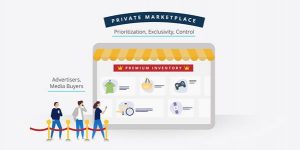 Source: Pocketmath[/caption]
Advantages of PMP:
a. Transparency - Both the advertiser and the publisher have a clear idea of the purchase they are making, the CPM (cost per mile) that needs to be paid and the kind of creatives that will be displayed.
b. Efficiency - Advertisers can set new purchases on top websites quickly and efficiently, as well as set inventory packages on particular segmented spaces.
c. Industry-standard - PMP is available on the largest programmatic exchange platforms like AppNexus, DoubleClick Ad Exchange, Kantar Media, MediaOcean, etc.
d. No need for the direct sales team - Managing a sales team can be very time consuming and expensive. Technology can replace having a sales team with PMP.
Source: Pocketmath[/caption]
Advantages of PMP:
a. Transparency - Both the advertiser and the publisher have a clear idea of the purchase they are making, the CPM (cost per mile) that needs to be paid and the kind of creatives that will be displayed.
b. Efficiency - Advertisers can set new purchases on top websites quickly and efficiently, as well as set inventory packages on particular segmented spaces.
c. Industry-standard - PMP is available on the largest programmatic exchange platforms like AppNexus, DoubleClick Ad Exchange, Kantar Media, MediaOcean, etc.
d. No need for the direct sales team - Managing a sales team can be very time consuming and expensive. Technology can replace having a sales team with PMP.
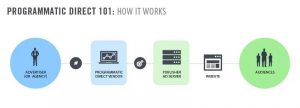 Advantages of Programmatic Direct:
a. Transparency - Publishers are aware of the exact number of impressions that need to be served and what kind of ads should be shown to which type of audience. This helps in better workflow optimization and publishers also have control over the look and context on the sites.
b. Automation - With Programmatic Direct, one can automate the ad-code configuration and insertion orders. This eliminates the probability of human error in the whole process.
c. Better insights - Publishers get a deeper insight and control regarding the audience in this premium inventory, which leads to better decision making, better targeting and price negotiation based on traffic value.
d. Directness - There is immediate transparency about the impressions that are served and the audiences who have viewed it. Advertisers do not have to wait for the ad campaign data, which is satisfactory and encourages them to spend more on such direct deals.
Programmatic ad buying has indeed been an integral part within the B2B community, as brands are always on the lookout to stay ahead of trends and come up with the best possible ways to reach out to their target audience.
To know more about programmatic ads and the best way to use it to your advantage, just leave us a message and we’ll get back to you.
Advantages of Programmatic Direct:
a. Transparency - Publishers are aware of the exact number of impressions that need to be served and what kind of ads should be shown to which type of audience. This helps in better workflow optimization and publishers also have control over the look and context on the sites.
b. Automation - With Programmatic Direct, one can automate the ad-code configuration and insertion orders. This eliminates the probability of human error in the whole process.
c. Better insights - Publishers get a deeper insight and control regarding the audience in this premium inventory, which leads to better decision making, better targeting and price negotiation based on traffic value.
d. Directness - There is immediate transparency about the impressions that are served and the audiences who have viewed it. Advertisers do not have to wait for the ad campaign data, which is satisfactory and encourages them to spend more on such direct deals.
Programmatic ad buying has indeed been an integral part within the B2B community, as brands are always on the lookout to stay ahead of trends and come up with the best possible ways to reach out to their target audience.
To know more about programmatic ads and the best way to use it to your advantage, just leave us a message and we’ll get back to you.
 Source: mindstreammedia.com[/caption]
“Programmatic ad buying allows brands to focus on who they’re serving ads to, rather than where they’re serving the ad.” Apart from being highly targeted, programmatic buying can also help open new doors of opportunities while saving both time and money.
Programmatic media buying are classified into 3 types -
Source: mindstreammedia.com[/caption]
“Programmatic ad buying allows brands to focus on who they’re serving ads to, rather than where they’re serving the ad.” Apart from being highly targeted, programmatic buying can also help open new doors of opportunities while saving both time and money.
Programmatic media buying are classified into 3 types -
1. Real-Time Bidding (RTB)
RTB, also referred to as open auction is for all advertisers and publishers. Here the inventory prices are decided in real-time through an auction. The publishers, who are selling the ad space, make it available for the buyers and marketers who will be bidding for that place. Different parameters are set like audience segment profile, price, network reach, etc. Bidders will bid based on these parameters and the highest bidder will have their ad placed on that space. RTB is cost-effective for buying media involving a large audience. [caption id="attachment_12717" align="aligncenter" width="500"] Source: AquityAds[/caption]
Advantages of RTB:
a. Per-impression ad buying process - With real-time bidding, brands have the advantage of bidding only on single impressions instead of paying a predetermined non-negotiable price. This reduces the probability of waste and also prevents advertisers from overpaying.
b. Single dashboard usage - Both advertisers and publishers use a single dashboard on the DSP (Demand Side Platform) or SSP (Supply Side Platform) for controlling the ad campaigns, eliminating the chances of confusion and the need of having multiple partners.
c. Easy to test & adjust - Data that is collected at the impression-level makes it easier for advertisers to analyze the efficiency of the ad creatives, context and the effect on the consumers - thus leading to an adaptable strategy.
d. Insights - Publishers get information in real-time about the inventories that perform the best and the ones most preferred by advertisers.
e. Remnant ad spaces are also sold - Auctions in RTB are automatically triggered with the arrival of a target visitor. Hence, inventories that were unsold previously can still be sold later, thus avoiding wastage.
Source: AquityAds[/caption]
Advantages of RTB:
a. Per-impression ad buying process - With real-time bidding, brands have the advantage of bidding only on single impressions instead of paying a predetermined non-negotiable price. This reduces the probability of waste and also prevents advertisers from overpaying.
b. Single dashboard usage - Both advertisers and publishers use a single dashboard on the DSP (Demand Side Platform) or SSP (Supply Side Platform) for controlling the ad campaigns, eliminating the chances of confusion and the need of having multiple partners.
c. Easy to test & adjust - Data that is collected at the impression-level makes it easier for advertisers to analyze the efficiency of the ad creatives, context and the effect on the consumers - thus leading to an adaptable strategy.
d. Insights - Publishers get information in real-time about the inventories that perform the best and the ones most preferred by advertisers.
e. Remnant ad spaces are also sold - Auctions in RTB are automatically triggered with the arrival of a target visitor. Hence, inventories that were unsold previously can still be sold later, thus avoiding wastage.
2. Private Marketplace (PMP)
PMP is more like an invitation-only marketplace where only selected advertisers can participate. In some cases, publishers may also undergo a selection process where advertisers can apply to get an invitation. PMPs are more applicable for advertisers who are trying to increase their efficiency and get a better return on ad spend. Having a direct relationship with publishers in this setup helps open possibilities for negotiation and curate packages according to requirement. [caption id="attachment_12718" align="aligncenter" width="500"] Source: Pocketmath[/caption]
Advantages of PMP:
a. Transparency - Both the advertiser and the publisher have a clear idea of the purchase they are making, the CPM (cost per mile) that needs to be paid and the kind of creatives that will be displayed.
b. Efficiency - Advertisers can set new purchases on top websites quickly and efficiently, as well as set inventory packages on particular segmented spaces.
c. Industry-standard - PMP is available on the largest programmatic exchange platforms like AppNexus, DoubleClick Ad Exchange, Kantar Media, MediaOcean, etc.
d. No need for the direct sales team - Managing a sales team can be very time consuming and expensive. Technology can replace having a sales team with PMP.
Source: Pocketmath[/caption]
Advantages of PMP:
a. Transparency - Both the advertiser and the publisher have a clear idea of the purchase they are making, the CPM (cost per mile) that needs to be paid and the kind of creatives that will be displayed.
b. Efficiency - Advertisers can set new purchases on top websites quickly and efficiently, as well as set inventory packages on particular segmented spaces.
c. Industry-standard - PMP is available on the largest programmatic exchange platforms like AppNexus, DoubleClick Ad Exchange, Kantar Media, MediaOcean, etc.
d. No need for the direct sales team - Managing a sales team can be very time consuming and expensive. Technology can replace having a sales team with PMP.
3. Programmatic Direct
This buying method also called automated guaranteed, is like a one-to-one buying process where advertisers can buy only a specific number of impressions directly from the publishers, without any auction. The process of ad buying in programmatic direct is more or less like an advertiser browsing through the catalogue and choosing placements. After the creatives and the additional tracking pixels have been configured, the advertiser places the order on the platform. The publisher will then audit and verify the ad campaign and the order is executed. Advantages of Programmatic Direct:
a. Transparency - Publishers are aware of the exact number of impressions that need to be served and what kind of ads should be shown to which type of audience. This helps in better workflow optimization and publishers also have control over the look and context on the sites.
b. Automation - With Programmatic Direct, one can automate the ad-code configuration and insertion orders. This eliminates the probability of human error in the whole process.
c. Better insights - Publishers get a deeper insight and control regarding the audience in this premium inventory, which leads to better decision making, better targeting and price negotiation based on traffic value.
d. Directness - There is immediate transparency about the impressions that are served and the audiences who have viewed it. Advertisers do not have to wait for the ad campaign data, which is satisfactory and encourages them to spend more on such direct deals.
Programmatic ad buying has indeed been an integral part within the B2B community, as brands are always on the lookout to stay ahead of trends and come up with the best possible ways to reach out to their target audience.
To know more about programmatic ads and the best way to use it to your advantage, just leave us a message and we’ll get back to you.
Advantages of Programmatic Direct:
a. Transparency - Publishers are aware of the exact number of impressions that need to be served and what kind of ads should be shown to which type of audience. This helps in better workflow optimization and publishers also have control over the look and context on the sites.
b. Automation - With Programmatic Direct, one can automate the ad-code configuration and insertion orders. This eliminates the probability of human error in the whole process.
c. Better insights - Publishers get a deeper insight and control regarding the audience in this premium inventory, which leads to better decision making, better targeting and price negotiation based on traffic value.
d. Directness - There is immediate transparency about the impressions that are served and the audiences who have viewed it. Advertisers do not have to wait for the ad campaign data, which is satisfactory and encourages them to spend more on such direct deals.
Programmatic ad buying has indeed been an integral part within the B2B community, as brands are always on the lookout to stay ahead of trends and come up with the best possible ways to reach out to their target audience.
To know more about programmatic ads and the best way to use it to your advantage, just leave us a message and we’ll get back to you. 
